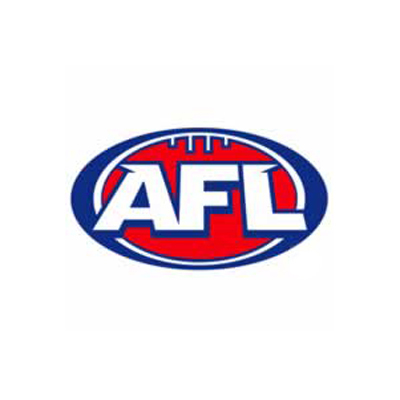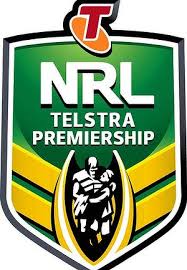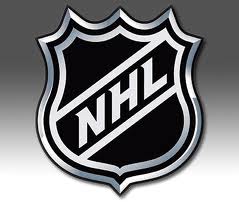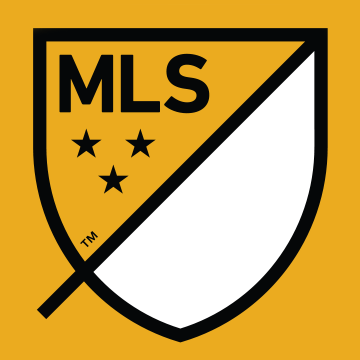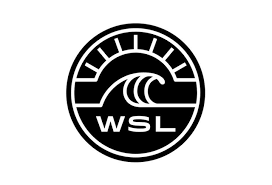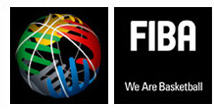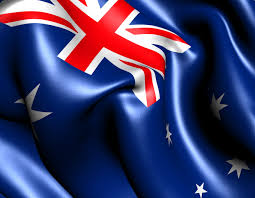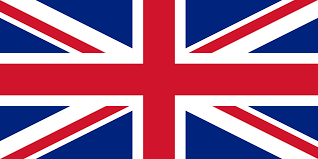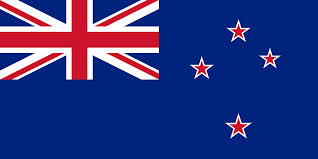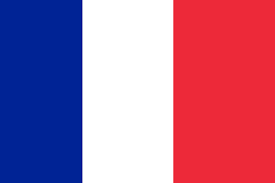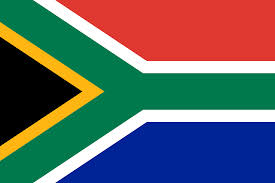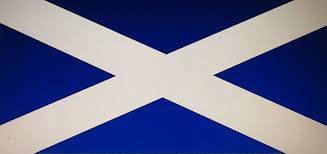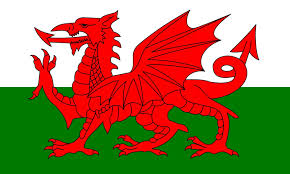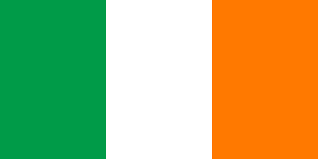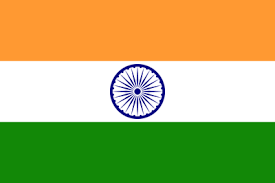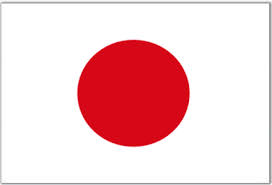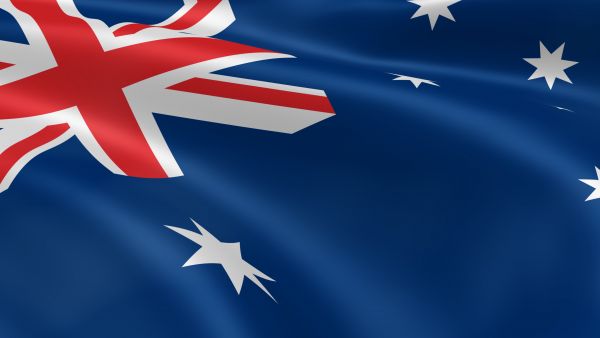International Surfing Association (Surfing)
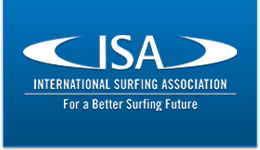
Latest News & Results
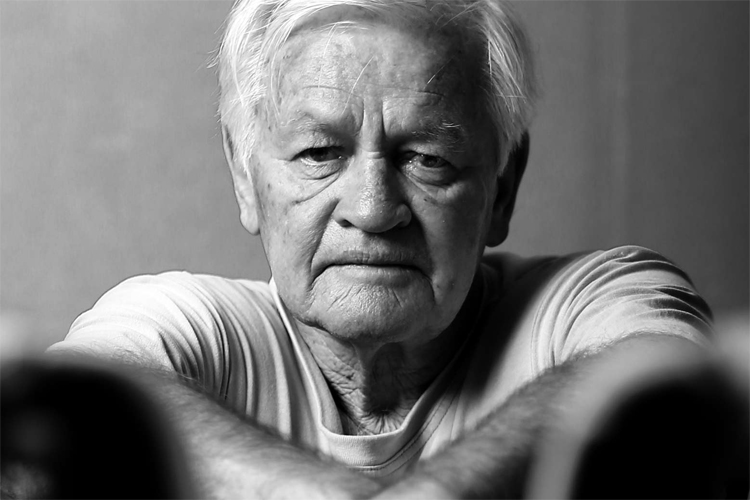
Geoff McCoy, one of the world's most innovative and creative surfboard shapers, passed away at home in Byron Bay, Australia, at the age of 79 after complications following a heart attack.
The pioneer of the shortboard revolution was born in 1944 in Gosford, New South Wales.
As a youngster, the son of a farmer and the Killcare Surf Club captain was a talented horseman.
Geoff started surfing at age 14 during his school holidays at Avoca Beach.
He shaped his first boards at 17 for Bennett Surfboards and Keyo Surfboards after concluding a five-year apprenticeship in wood and metal pattern making.
He was also the co-founder of M&M Surfboards.
In the 1970s, the Australian set up his own business, McCoy Surfboards, in Brookvale, a Sydney suburb.
Ray Richards, the father of world surfing champion Mark Richards, encouraged him to do so and ordered the shaper's first ten creations.
In just half a year, the McCoy factory produced 65 boards weekly.
It marked a vibrant era as Geoff crafted boards for numerous top surfers and embarked on his inaugural journey to Hawaii.
In 1978, Geoff dedicated a year to California, establishing McCoy USA and collaborating with Jeff Hakman on design innovations.
By then, McCoy had shifted his factory to Avoca Beach on the NSW Central Coast, laying the foundation for the expanding McCoy empire across Japan, the USA, and Hawaii.
Geoff's instinctive desire to experiment and try new things got him into the world of twin-fin surfboards, making him one of the first Aussies to shape them.
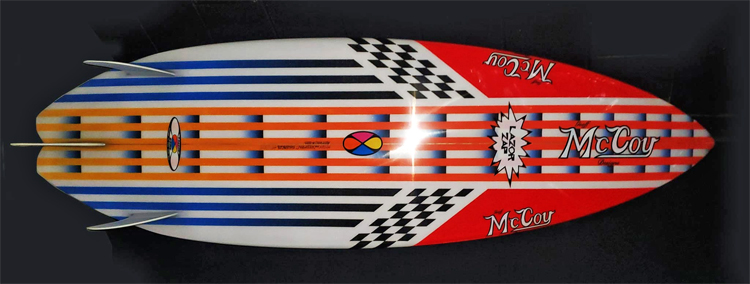
The Lazor Zap
However, what really changed for the NSW surfer-shaper was the famous "Lazor Zap," a surfboard model with a steep rocker and a sharp nose.
The board allowed surfers to get more vertical, engage in tighter top-to-bottom surf lines, and take more risks while performing radical maneuvers.
According to surf historian Matt Warshaw, the "Lazor Zap" allowed surfers to "move the board's trimming sweet spot - usually a foot or so ahead of where the rider stands while turning - back toward the tail section so that, in theory, the surfer would not have to move their feet."
The magical model helped team rider Cheyne Horan lock in two runner-up finishes in the 1981 and 1981 ASP World Tour.
Here's how Geoff McCoy described his iconic template:
"The concept of the 'Lazor Zap' is based on my energy theory, which explains how energy turns into wave formation and how objects react with those formations."
"The original 'Lazor Zap' was designed with short arc, reactive high-powered surfing in mind. The surfer was able to stand in one position, not having to move their feet to perform their maneuvers and this is exactly how the boards performed."
"The pulled nose allowed the board to elevate very quickly as it reduced the length of rail being used when the board is turning."
"In turn, this allowed for more maneuvers to be performed while the surfer was standing in a fixed position on the wide thick supportive tail which generates greater pressure and easier reaction."
"The advantages were many - easier to paddle, stand in one position to ride the wave, quicker reaction from the extra volume, easier turning from less resistance, and ability to surf at a faster speed."
"In effect, everything required from them, the 'Lazor Zap' designs delivered at all levels of performance."
An Inspiring Surfboard Craftsman
McCoy's lineup also featured other groundbreaking designs, such as the "Nugget," "Quazor Zip," and "Astron Zot," each presenting its distinct features and riding opportunities.
Simon Anderson's thruster revolution soon eclipsed McCoy's avant-garde models and designs sold via Lost and Channel Islands.
But the mentor of the three-fin setup would Call Geoff one of the five inspiring figures behind the thruster.
Meanwhile, a business manager hired by Geoff methodically accumulated debt for McCoy.
The shaper became aware of this when a longstanding associate inquired about outstanding payments.
Geoff contacted the manager from Sydney, only to find the accounts wiped from the computer upon his return to the Avoca factory.
He had lost around 500,000 dollars.
Faced with bankruptcy or receivership, bankruptcy was unthinkable for Geoff, who valued honor and integrity.
Reluctantly, he placed the flourishing business under receivership, liquidating assets to settle debts in 1984.
McCoy never stopped shaping boards - in Hawaii, Tweed Heads, and Byron Bay - or inspiring craftspeople worldwide to rethink his greatest models.
The man who spread the tear-drop-shaped surfboard smoothly blended philosophy, pragmatism, and technically superior foam-mowing skills into his out-of-the-box designs.
In 2018, Geoff highlighted the surfers who profoundly influenced his shaping philosophy: Gerry Lopez for hold and release, Midget Farrelly for the outline, and Nat Young for rails.
McCoy might have left us, but his rideable legacy lives.
Words by Luís MP | Founder of SurferToday.com
https://www.surfertoday.com/surfing/geoff-mccoy-the-father-of-the-lazor-zap-passes-away

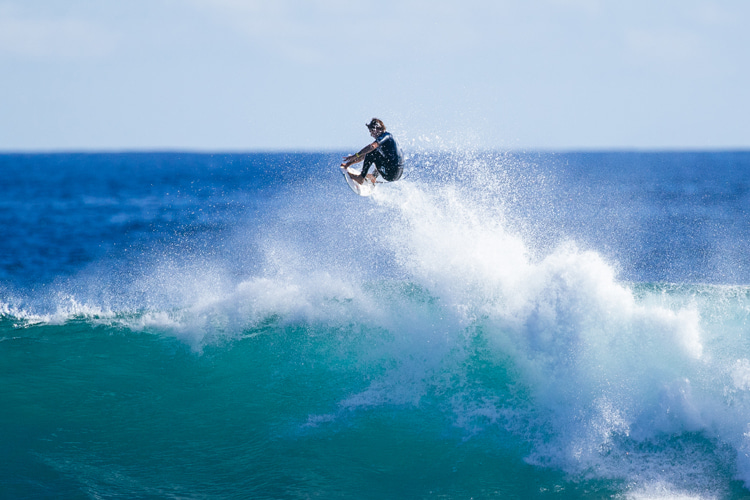
Jack Robinson and Gabriela Bryan have taken out the 2024 Margaret River Pro.
In a full day of competition that ran 18 heats, Bryan and Robinson took down a stacked field in six-to-eight-foot waves at Margaret River's Main Break.
As the final event before the mid-season cut, the surfers left in the draw had one last opportunity to continue through to the back half of the 2024 CT season.
Today's high-pressured heats confirmed the final list of competitors who made and missed the mid-season cut.
Gabriela Bryan Claims Maiden CT Victory
Coming into Margaret River Pro, Gabriela Bryan was sitting in 10th place on the rankings and in desperate need of her best result of the year.
A standout at Margaret River, Bryan has made the final at this location before to save her place on Tour with a career-best runner-up finish in her rookie season.
The 22-year-old's path to the Final was a rocky one, with plenty of close results seeing her edge out her opponents, Costa Rica's Brisa Hennessy and Australia's India Robinson.
Bryan saved her best surfing for last against 2024 CT Rookie Sawyer Lindblad (USA) in the Final, where she posted her best heat total of the week, a 15.93 (out of a possible 20), to claim her maiden CT victory and move up to No. 5 on the world rankings.
"I don't even know what to say. I'm so happy right now," Bryan said.
"It's been a crazy day, crazy week, crazy month. I'm so happy to get this win and proud to do it when my back was against the wall. I couldn't do this alone, though. My mom, my dad, my brother, and my sister support me so much."
"Seabass [Sebastian Zietz] has supported me so much. There are so many people at home, and I hope I've made them all proud. This is insane, and I don't even know if it's sunk in yet."
The women's Final saw eventual winner and 2022 Western Australia Margaret River Pro runner-up Bryan take on rookie Lindblad on a day that has once again seen the next generation of female competitors raise the bar.
For the majority of the 35-minute matchup, both women held mid-range heat totals without separating Linblad's vertical backhand approach from Bryan's frontside power hacks.
Then, with less than five minutes left, Bryan found the biggest wave of the set and laid down a huge frontside carve, then finished with a super late, critical rebound to earn an excellent 8.10 (out of a possible 10) to take the win.
"I was coming into this event under the cut, and now I'm No. 5, which makes a big difference," continued Bryan.
"It's just reassuring knowing my surfing belongs on Tour. I'm so happy we got good waves today."
"Last year, I was eliminated from this event and relied on things going my way to make the cut, so it was so good to do it myself and do what I needed to do."
"All the girls put on such a good show today. When I kicked out of that wave, I knew it was sent to me by someone - with those dolphins riding it - it was amazing."
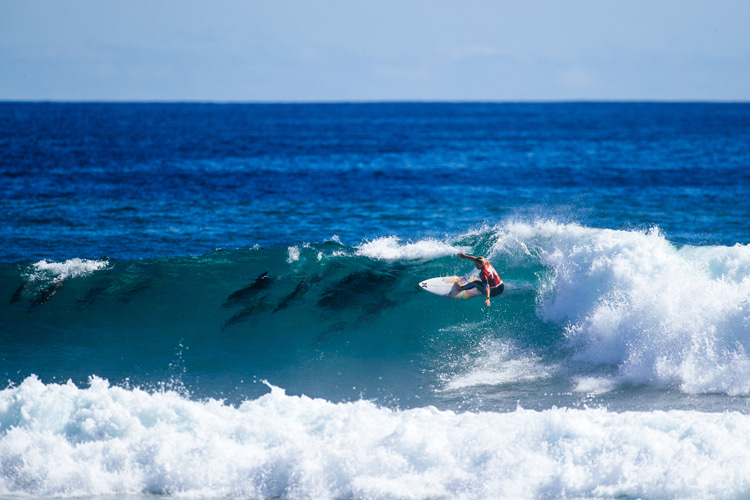
Robinson Earns Second CT Victory at Margaret River
After winning the 2022 Western Australia Margaret River Pro, a knee injury early last season robbed Jack Robinson of defending the title at his home break.
This year saw Robinson get his opportunity, and after an early exit at Bells Beach, the young Australian World Title hopeful looked destined for the Final from his performances today.
Robinson built through the day and, in the Final against John John Florence, posted the second-highest heat total of the event to claim his second win in front of his hometown crowd, friends, and family.
"I missed last year and went through so much to get back and get through that injury, so I felt like this year I was defending my title," Robinson said.
"I'm feeling good. That's the final I wanted, and I wanted to throw everything at it. It's always fun surfing against John."
"We will have many more heats in the future, I'm sure. What a day. I'm super humbled to be here and win at my home, and I'm so grateful for this moment."
The men's Final saw local boy Robinson come up against Main Break standout Florence in a matchup of the two event standouts.
Florence looked to be the man to beat coming in, but Robinson had other ideas, posting a 9.10 for three huge carves on one of the biggest waves of the event, then backing it up with an 8.17 for a massive frontside straight air with three turns to complete the wave.
Robinson's 17.27 heat total (out of a possible 20) was the second-highest of the event and left Florence needing a Perfect 10 to take the lead.
Florence posted an 8.10 to lower the requirement but couldn't find another set wave, leaving Robinson to take the win and equal Florence with two Main Break victories in what was one of the heats of the event.
With this being his second CT win of the year, Robinson moves to second on the rankings heading into Tahiti, where he is the defending event winner.
"John John fires me so much, and I always look forward to heats with him," Robinson continued.
"There's no one else I'd rather final with than John. Watching him out here inspired me so much. He set the benchmark. It's not just me who won; it's everyone who supports me."
"It's an incredible moment. To come back here after traveling all year is special. It's my home, and it's the best place in the world. And I'm grateful to be here right now."
Last Mid-Season Cut Qualifiers
Sally Fitzgibbons, the 15-year CT veteran, needed to win the entire event to save herself from the cut.
In a battle with 2024 CT rookie Sawyer Lindblad, the two competitors played a patient game, with former Margaret River winner Fitzgibbons holding the advantage with only two waves surfed.
With everything on the line, Lindblad threw everything at a medium set with only seconds remaining to earn a 5.50 and the win by just 0.50 of a point.
For Fitzgibbons, it's the second consecutive year she will be forced to return to the Challenger Series, a tour she dominated in 2023.
Bryan won her heat against India Robinson in the first Quarterfinal to make the cut and secure her position on the Tour for her third straight season.
Robinson, who needed to win the entire event to avoid relegation, put up a strong fight, but she fell less than 2 points shy in the Main Break conditions.
With a massive comeback to start the day in Heat 5 of the men's Round of 16, Moniz saved himself from the cut in the dying minutes of his heat against World No. 2 Ethan Ewing.
With time escaping the Hawaiian, he had one final opportunity that paid off with an excellent 8.17 and the win.
Moniz went on to face Robinson, where the close matchup saw the West Australian get the win with a narrow 0.63-point advantage.
Brazilian Caio Ibelli was unable to take down eventual Quarterfinalist Smith.
His loss in the Round of 16, Heat 6, means that he missed the cut, while the result also cleared the way for Connor O'Leary (JPN) to qualify.
Ibelli will head back to the Challenger Series, which kicks off in exactly one week at the Bonsoy Gold Coast Pro at the famed Snapper Rocks.
Joining Ibelli at Snapper will be Samuel Pupo (BRA) after his loss to Florence in the first Quarterfinal.
An excellent performance from Florence, with a 16.26 combined score, was too much for Pupo to defeat with a 14.17.
Pupo relegated his older brother in the Round of 16, and they'll now do battle to requalify for the Tour together via the Challenger Series.
Pupo's also loss provided the opening and confirmation for Yago Dora to be the final men's competitor to clear the mid-season cut.
2024 Margaret River Pro | Finals
Women
- Gabriela Bryan (HAW) 15.93
- Sawyer Lindblad (USA) 13.94
Men
- Jack Robinson (AUS) 17.27
- John John Florence (HAW) 16.04
Made the Cut
Men
- Griffin Colapinto
- Jack Robinson
- John John Florence
- Ethan Ewing
- Jordy Smith
- Jake Marshall
- Barron Mamiya
- Cole Houshmand
- Kanoa Igarashi
- Liam O'Brien
- Imaikalani deVault
- Crosby Colapinto
- Seth Moniz
- Rio Waida
- Ramzi Boukhiam
- Italo Ferreira
- Leonardo Fioravanti
- Ryan Callinan
- Gabriel Medina
- Matthew McGillivray
- Connor O'Leary
- Yago Dora
Relegated
- Samuel Pupo
- Ian Gentil
- Caio Ibelli
- Miguel Pupo
- Kade Matson
- Jacob Willcox
- Frederico Morais
- Callum Robson
- Eli Hanneman
- Kelly Slater
- Deivid Silva
- Joao Chianca
- Filipe Toledo
Women
- Caitlin Simmers
- Johanne Defay
- Molly Picklum
- Brisa Hennessy
- Gabriela Bryan
- Caroline Marks
- Bettylou Sakura Johnson
- Tyler Wright
- Tatiana Weston-Webb
- Sawyer Lindblad
Relegated
- Lakey Peterson
- Luana Silva
- Sally Fitzgibbons
- Isabella Nichols
- India Robinson
- Alyssa Spencer
- Sophie McCulloch
- Carissa Moore
https://www.surfertoday.com/surfing/jack-robinson-and-gabriela-bryan-win-2024-margaret-river-pro

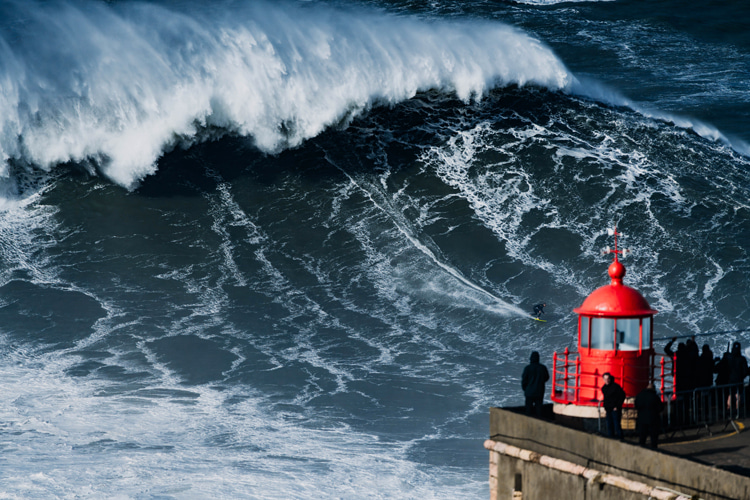
Big wave surfing is an industry with an industry.
The relentless chase for world records translates into prize money and sponsorship deals.
Athletes have been pushing their limits and putting their lives on the line to ride bigger and heavier waves.
Top athletes now work with multidisciplinary teams involving personal trainers, psychologists, nutritionists, photo and videographers, and public relations professionals.
This 360-degree approach brings world-renowned big riders closer to their goal of holding the record for the largest wave ever surfed.
Sebastian Steudtner is one of them.
The German holds the coveted Guinness World Record trophy validated by the World Surf League.
But the 2023/2024 winter season was particularly rich in XXL swells and potentially world record-breaking feats.
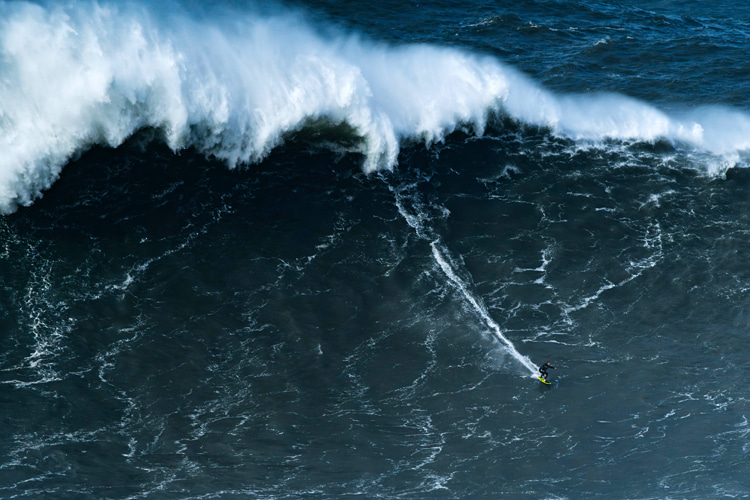
Drones to Measure Wave Height
So, because the best defense is the attack, Steudtner leveraged "state-of-the-art drone technology" developed by Porsche Engineering to measure one of his best recent rides at Nazaré.
The drone prototype from the joint technology project between Team Steudtner and Porsche Engineering was used during this winter's XXL swell.
According to the German team, the device determines the height of waves quickly and precisely.
The prototype is equipped with cameras, control units, and storage devices.
In addition, sensors are used in vehicle development to support modern driver assistance systems.
The drone can measure all areas of the wave and the surfer within a radius of about 100 meters.
"We are very pleased to have created an innovative solution that can advance the sport of surfing," says Marcus Schmelz, Project Manager at Porsche Engineering.
"It was a challenge to develop a drone that can measure not only the height of the waves but is also capable of tracking the surfer within the radius throughout the entire wave ride."
Porsche Engineering's drone measured Sebastian's wave at Nazaré at 93.73 feet (28.57 meters). The wave was caught and ridden on February 24, 2024.
The current world record, also held by Steudtner, is 86.4 feet (26.21 meters), which was achieved at Nazaré in 2020.
The current official WSL measurement model uses video footage and still images to determine wave height.
"We are open to sharing our technical insights from the drone development with official experts," adds Schmelz.
"Our goal is to further increase transparency in big wave surfing and to provide accurate measurement data more quickly."
Porsche's drone is not the first to fly over waves and measure them.
In 2020, Teddy Allen and Milan Curcic created Henet Wave, a similar, portable unmanned aerial vehicle (UAV) that works as an aerial surf buoy.
The device was tested in 2022 and has been continuously updated.
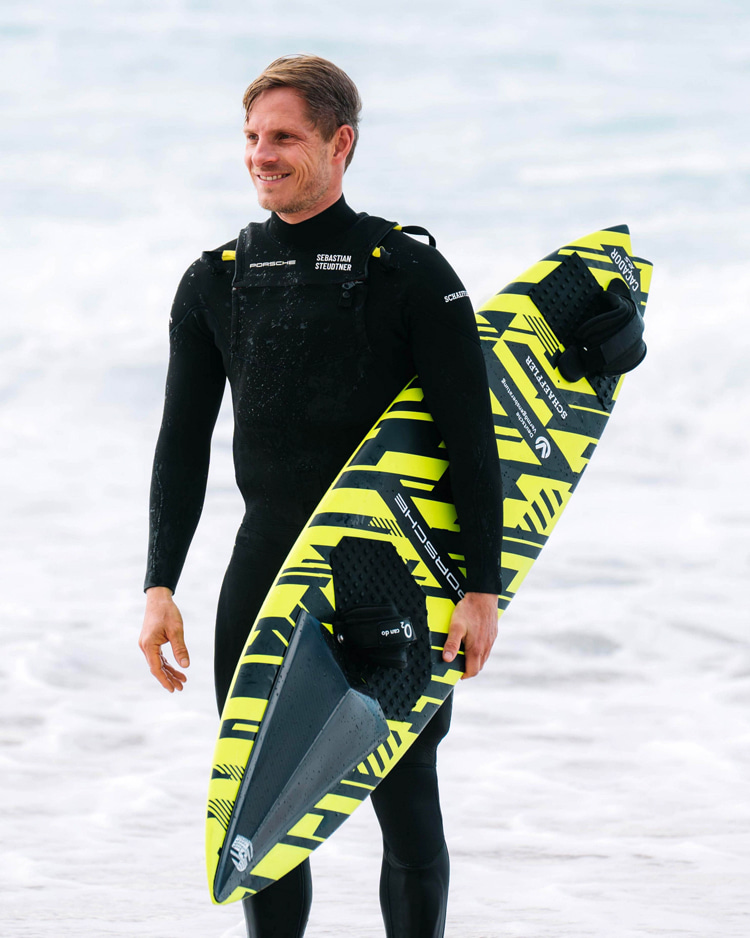
Mission Wave Alpha
Sebastian Steudtner's entourage is one of the strongest in the field.
The German is backed up by several multinational corporations, including Porsche, Porsche Engineering, Schaeffler, O2 Germany, Deutsche Vermögensberatung, X-BIONIC, and others.
He recently set up Mission Wave Alpha, a project that aims to get Steudtner surfing waves twice the size of the current world record, i.e., 130-160 feet (40-50 meters).
These brands are helping him push the sport to the next level on all fronts, from water safety to board materials and design.
Over the past three years, Steudtner, in partnership with Porsche Engineering and Schaeffler, has developed and optimized new surfboard technology to get him surfing the biggest waves possible.
For instance, to reduce water and air resistance, a fundamental variable in surfing, the surfer and his tech team used the latest simulation methods and wind tunnel validations.
As a result, with the new board "Caçador RS," Steudtner says he can now reach speeds of up to 100 kilometers per hour, compared to the previous 80 kilometers per hour.
Higher speed is critical to riding larger waves because the taller a wave is, the faster the surfer must be so that it doesn't overrun him.
Now, this speed advantage enabled Steudtner to ride the potential next record wave.
"I am very proud to be able to bring big wave surfing to the next level through the development of safety and technology and by believing in my dream," concludes Sebastian Steudtner.
"Together with my team, which is driven by its unique 'can do' mindset to define possible in big-wave surfing, we were able to accomplish this mission."
The race for the world's largest wave ever surfed is on, with Lucas "Chumbo" Chianca also claiming a potential record in Praia do Norte, Nazaré, Portugal.
Words by Luís MP | Founder of SurferToday.com
https://www.surfertoday.com/surfing/sebastian-steudtner-and-porsche-develop-wave-height-measurement-drone

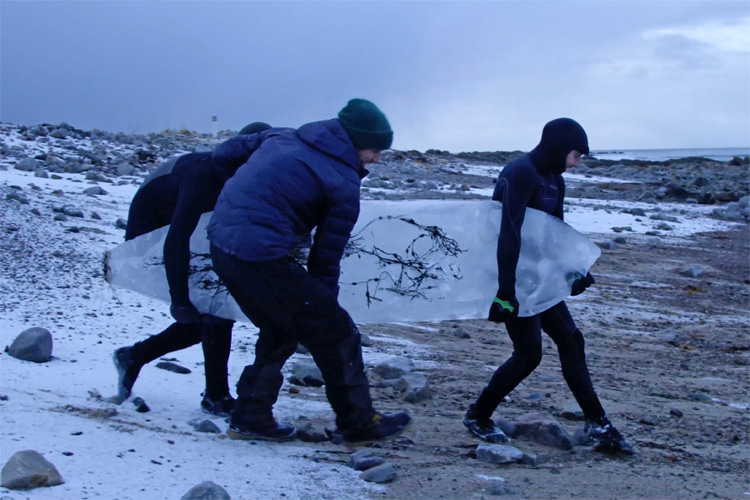
Is it possible to shape a surfboard out of ice? And if you make it a reality, can you surf it?
They're probably the world's most sustainable surfboards, made from the same core of waves - water.
The physics of surfboards and surfing tell us that gravity and buoyancy play fundamental roles in moving the rideable surface across the wave.
These two forces only need a stable, relatively wide, and long stiff material to propel a human over the water.
One of the first to come up with the idea of a surfboard made of frozen water was Conn Bertish, a surfer, artist, and ocean protection activist, who crafted a life-sized surfboard completely out of ice in 2009.
Bertish spent two days sculpting the ice board in a specialized fridge in Cape Town, South Africa.
Afterward, the board was transported in two pieces to Depasco Café, where it was showcased to the public as part of the Wavescapes Surf Art Exhibition.
The goal was to highlight the impact of global warming on our oceans and the rapid melting of glaciers and ice caps worldwide.
So, if ice is solid and floats, why can't it be shaped and turned into a real rideable surfboard?
Well, that was exactly what Nordics and Scandinavians thought when they first created these innovative surf craft.
If there's a resource they can harvest nearly infinite quantities, it is ice.
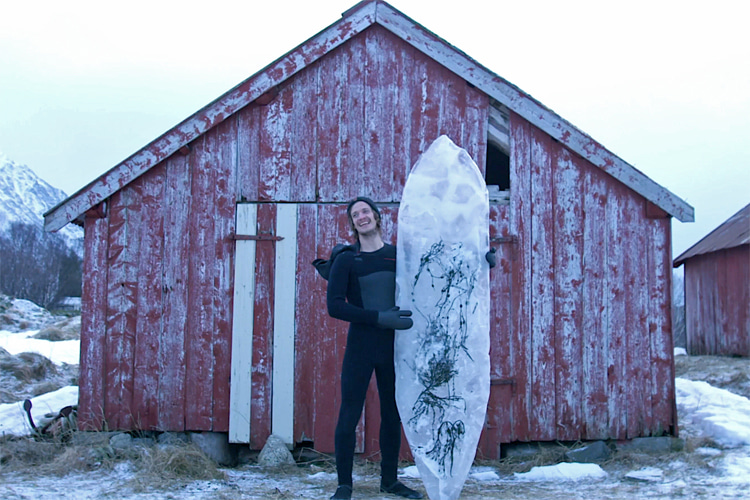
The Pioneering Norwegian Experiment
In 2019, Lofoten-based filmmaker Inge Wegge shot "Ice Edge," a short movie about a Norwegian collective trying to shape surfboards made of ice.
The team included seasoned surfers, a professional ice sculptor, and a local shaper.
It was a trial-and-error process, as different shaping techniques had to be tested, and carving ice blocks above the Arctic Circle is not something anyone can do.
Nothing was ruled out: longer and shorter templates, finless and non-finless setups, the use of sand to increase grip, and even embedded LED lights.
Soon, they realized they needed around 20-30 frozen surfboards and a boat to carry them to the lineup and town surfers into the waves.
All of this is in -10 °C of air temperature that often feels like -25 °C due to wind.
At first, they tried cutting ice from frozen lakes, but it didn't work.
Then they made molds from plastic and wood, filled them with fresh water, added seaweed for grip, and some other things for fun.
They put the boards in a room at -25 °C for two days in a fishery before testing them in the waves.
They tried out the boards for four days, carrying heavy 70-kilogram creations to the water.
The boards lasted about 30 minutes in the 3 °C ocean water before melting away, with only about five minutes of good surfing conditions.
They needed extra help to push the heavy boards into the waves for enough speed to catch them.
This kind of surfing is riskier than regular surfing because falling onto a 60-70-kilogram ice board can hurt.
After several days of trying, they nailed it, making ice surfboarding a reality.
Wakesurfing with an Ice Board in Minnesota
In 2021, professional ice sculptor Trevor Pearson fulfilled a dream: to shape a surfboard from a single piece of ice.
He meticulously designed it to resemble the shape and dimensions of a traditional surfboard, making it slightly larger to enhance water displacement and improve riding stability.
The thickness of the ice board was also considered to ensure it could withstand a surfer while balancing weight and buoyancy.
The experiment took place on a day when the ice had just melted on Eagle Lake in Minnesota.
Trevor and friends took the wake boat out, put the two and a half to three-inch thick board in the water, and realized it held up surprisingly well.
Their only enemy was temperature.
Trevor's experience on the ice board involved a delicate balance between staying upright and monitoring the board's condition.
As he rode, he had to assess the thickness of the ice beneath him, noticing it gradually thinning with each run.
The board was melting. Despite the inevitable, Trevor managed to navigate the ice board for a while before it eventually snapped in half.
The 50-pound Transparent Surfboard
In April 2024, professional wakesurfer Sam Studee challenged local company Minnesota Ice to shape a wakeboard out of frozen water.
The result was two 50-pound transparent boards swiftly tested in a nearby lake's cool waters.
The ride was a success; he was literally surfing on water, even though the boards melted and broke in half in 30 seconds.
How did Studee not slip? The real-life Cody Maverick drilled screws through his shoes for traction.
Words by Luís MP | Founder of SurferToday.com
https://www.surfertoday.com/surfing/a-brief-history-of-ice-surfboards

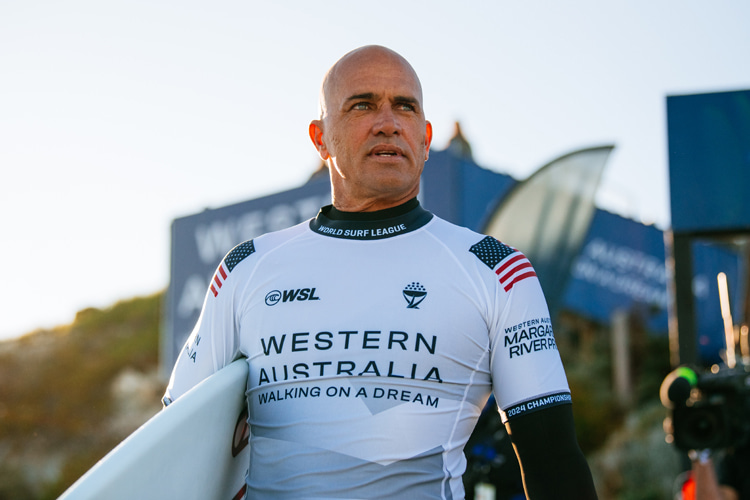
The most successful competitive surfer of all time, Kelly Slater, rode what may have been the last heat of his 24-year professional career.
The 11-time world surfing champion survived the elimination round at Margaret River but lost his Round 32 against Griffin Colapinto.
Consequently, Slater does not make the mid-season cut and is expected to hang his leash when it comes to professional surfing.
There was never a formal announcement, but it's clear from his emotional post-comp words that surfing's greatest of all time (GOAT) is moving on to a new stage of his life.
It's been 44 years of putting on a jersey and lifting trophies since the Cocoa Beach-born started competing at eight.
The youngest (20) and the oldest (39) surfer to conquer a world surfing title won 56 Championship Tour (CT) events.
The first contest win arrived in 1992 at Rip Curl Pro Landes, and the last was the 2022 Billabong Pro Pipeline.
Kelly Slater won eight Pipe Masters, three Triple Crown of Surfing trophies, and two Eddie Invitational contests.
In the future, we may see the smooth Floridian taking on his favorite waves as a wildcard: Pipeline, Teahupoo, and Cloudbreak.
What has he missed? The Olympic Games.
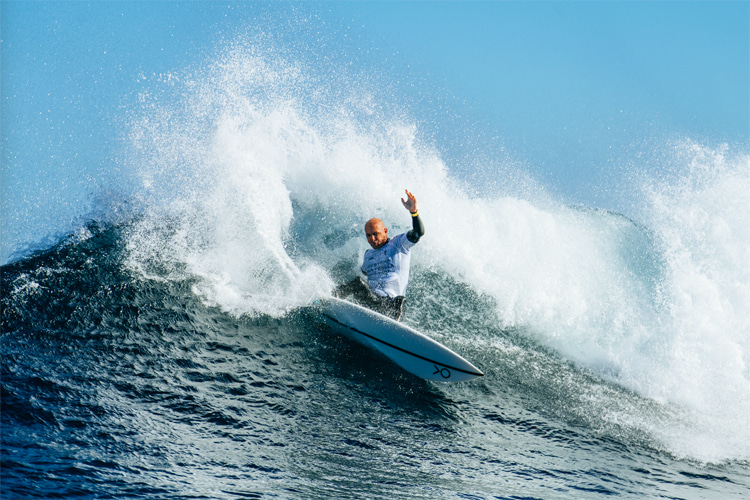
In His Own Words
"A lot of emotions today. I look back at my friends who've retired and maybe they can relate to how I'm feeling now - just some relief, you know?"
"There's no sleepless nights with the pressure. I think I put a lot of pressure on myself still to this day."
"For heats, I have a certain expectation for myself, and I haven't been putting in the working discipline, the hours in the water, you got to surf with lots of people and really figure out your boards in the wave and all that stuff and I just did it for so long it's nice to have that rear view at this point."
"I was trying to get myself into the Olympics, and since it doesn't look like at all happening in any reasonable sense, like about 10 people would have to get injured, if a couple of opportunities arise, I'll see how I'm feeling.
"This morning, I fought for the position with Cole and Yago, and it paid off. I started out that heat out really strong, and then I actually wasted priority in a couple of waves that were low-scoring and didn't pan out to be good waves."
"Competitively, I was good in that heat. The heat with Griff, I just got kind of caught in a hole cuz the ocean did die, and the wind came up. I was imagining a seven or eight was going to come when the best wave was going to be that six the Griff got, and I let him have it.
"So, little mistakes there, but you can't predict what ocean's going to do. You go to be in that moment and have an idea of what's going to come."
"But I've been competing for 44 years. I started competing at eight years old in 1980, so I'm used to being in that environment."
"At the same time, I hold myself to a certain standard in my head, so when I'm not getting the results, and I'm not putting myself in competitive situations... you make your own luck."
"I've had a little bit of reluctance. I am surfing very injured still. I probably came back a little too quick after surgery, but you know I wasn't going to stick around till next year and say, 'Can I have one of those wildcards?, especially with João and a couple of guys hurt and they're at the beginning of their career. They have all the desire to be there, and the baby is coming; it's the right time."
"Surfing is number one to me still, and I want to surf my best every day. I still want to get my favorite board and surf my best wave of my life and you know that I don't think that ever goes away."
"It's a funny thing because when I got on Tour, I think Tom Carroll and those guys were about the oldest guys - 29, 30 - and that seemed to be what was going to be ancient surfing."
"So I had this idea that I was going to have a 10-year-long pro career once I got on tour.
"And then I got really burned out at 26 and retired and then three years off, came back, and to be honest, I wasn't really spoken about as being in that picture that first year back. It was Taj, Andy, Parko, Dingo, and that kind of little fire under me for sure."
"I was the underdog because Andy was just on fire those three years. I think he won the first year I was back in the tour - 2002 - and he kind of started his reign."
"And that got me fired up, and then losing so closely to him was really like a heartache for me. You might see it in 'Blue Horizon' - it was tough."
"And then next year, I didn't even try. My heart wasn't in it - I was like, 'That hurts too much to lose that close,' and then in the beginning of 2005, I said to Parko, 'Which one of us is going to take this thing? Come on, let's go!' And then Mick got in the mix. He won in 2007, and then we went back and forth."
"It definitely lit a flame under me, and I felt like that really gave me a lot of longevity because I knew I could dig it out of myself."
This article is being updated.
https://www.surfertoday.com/surfing/kelly-slater-retires-from-professional-competitive-surfing

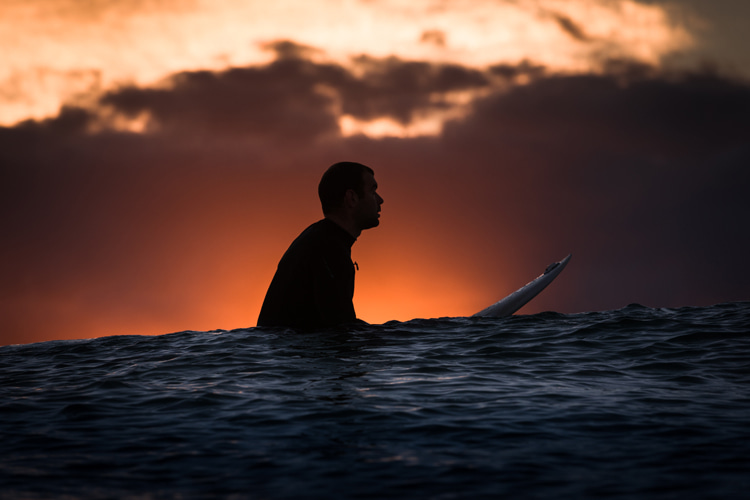
The exponential growth in the number of surfing participants is undeniable, but the industry failed to accompany and capitalize on this opportunity. Here's why the sport lacks undergraduate and postgraduate courses and programs and how to draft a simple surf industry MBA program.
In the 1990s and early 2000s, the surf industry enjoyed some of its best years ever. The surfing community was engaged with the companies and vice-versa.
People proudly wore surfwear, and brands were an active part of the show, whether by sponsoring athletes and events or creating innovative initiatives that kept the sport united and tight.
Apparel and clothing sales soared, and when the internet was about to take the sport to a whole new stratospherical dimension, everything changed.
The 2007 American subprime mortgage crisis hit the world, and the world's largest surf companies entered their decadence decades.
Surf culture changed fast, too.
There were more indie surf manufacturers biting the toes of the big players, and recreational surfers were no longer willing to pay $90 for a pair of boardshorts.
The detachment period between brands and buyers continued, and the surf industry at large did not change the paradigm.
The most recognizable insignias insisted on selling their products the same way, using the same old methods and featuring the same old stereotypes.
Bankruptcy and merging news followed, but the industry kept walking the same path.
Despite growing dissatisfaction with surfing's most popular and powerful communications weapon - the Championship Tour (CT) - the fans have not been listened to enough.
Reality shows were launched, and wave pools welcomed professional surfers competing in controlled conditions.
It seemed like surfing had been taken over by highly trained and skilled businessmen with no connection whatsoever with the multidimensional reality of surfing.
And maybe that's the main issue - knowledge of the sport and its profoundly diverse roots and impacts.
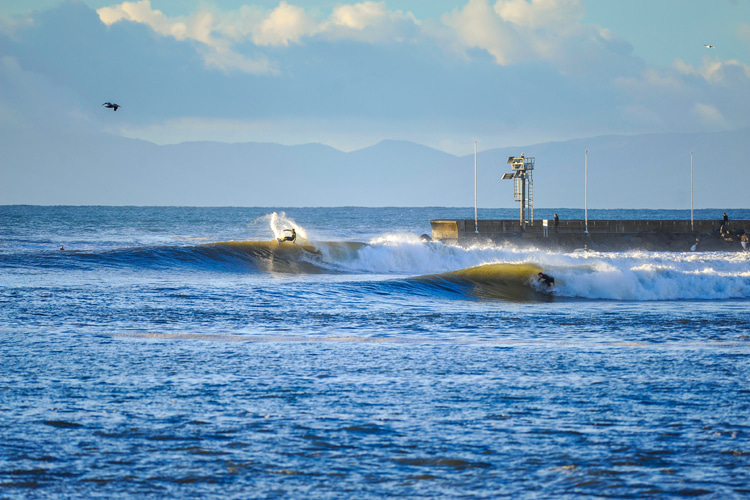
The 360-Degree Vision
You cannot understand the surf industry without knowing how it went from a pastime and spiritual activity to the fully grown sport that it is today.
You have to learn the intermediate steps that took it from the sands of Honolulu's Waikiki Beach to Nazaré's Praia do Norte in Portugal.
These mid-level connections provide a deep understanding of what surfing is today and where it could go tomorrow.
At which point in time did the world surfing community require meteorologists to improve their scoring and optimize their traveling?
How does surf forecasting work? How did it become a business, and how could it go beyond the borders of the sport's need and into the mainstream?
What are the mathematical, oceanographical, and environmental parameters and variables that shape modern surfing?
What impact do they have on the world?
What is surfing's role in local tourism? Is there a recipe or guidelines for boosting a coastal town's economy without damaging it?
What does surfonomics teach local and national authorities? How do you frame surfing in the Olympic context in the medium and long term?
What are surf training's best high-performance practices, and how can small details in surfboard shaping influence the way we ride waves?
How can surfing and surfers become role models for what truly matters, including ocean and beach protection, healthy lifestyles, and respect for others?
The reality of surfing as an industry and a sport is unique. Despite having over 35 million participants in a 50 billion dollar market, it is still pretty much unexplored and fragmented.
The world's best banker will not necessarily turn a multi-billion-dollar company or competitive sports circuit into a highly successful business or organization.
And with the wave pool revolution and the introduction of AI-based products, the industry requires specific education programs.
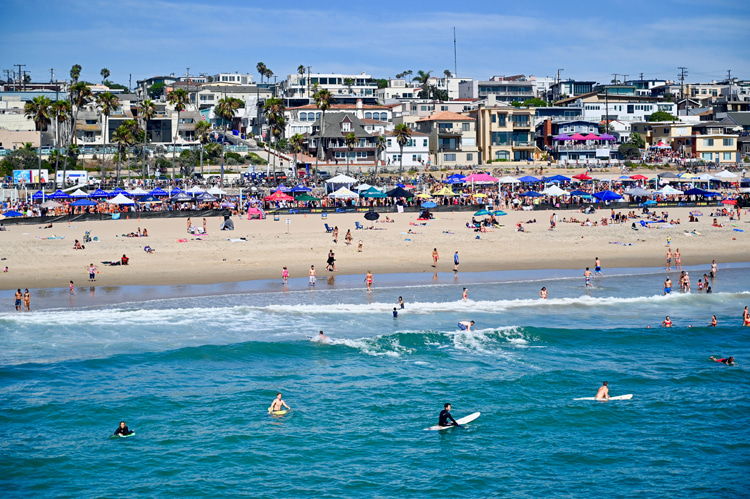
Past and Present Postgraduate Studies in Surfing
The first decade of the 21st century saw the launch of several postgraduate studies in surf-related topics.
SurferToday highlighted their birth at the time, including:
- BSc (Hons) in Surf Science and Technology (Plymouth University, United Kingdom);
- Diploma of Sport Management: Surfing Studies (Southern Cross University, Australia);
- Bachelor of Science: Surf Science and Technology (Edith Cowan University, Australia);
- Surfing Administration, Marketing and Business Management (Universidade de Sao Paulo, Brazil);
However, these higher education courses were relatively short-lived, never quite got support from the industry, and were eventually discontinued.
Some colleges and universities still offer some postgraduate qualifications and degrees today. They include:
- FdSc Surf Science Degree (Newquay University Centre Cornwall College);
- Post-graduation in High-Performance Surf Coaching (Faculty of Human Kinetics, University of Lisbon);
- Science of Surfing Performance (School of Environmental and Life Sciences, University of Newcastle Australia);
However, the sport still lacks an in-depth, holistic program that provides present and future surf industry professionals with a 360-degree perspective of the sport, which can then be applied to business management or more sports-driven occupations within surfing.
It's impossible to separate modern surfing from the business side of it.
Simultaneously, those who address surfing as a product that can be monetized as any other sport or service will be on the wrong path.

Designing a Higher Education Surf Industry Program
If the goal is to prepare a surf industry professional for the multiple facets of the sport, the university or college should address the first three major rough pillars before designing the postgraduate program:
- Past: The history of surfing since its roots in Ancient Polynesia, Peru, Africa, and even China;
Present: Surfing in a global world dominated by social media and the explosion of wave pools;
Future: The role of technologies in surfboard shaping and design, surf forecasting, and how AI will impact several aspects of an increasingly digitized sport;
After identifying our rough guidelines, it's time to break them down into more detail. What should a surf industry-driven MBA course teach? Here's a draft for a two-year program:
1st Semester
- Past History of Surfing: The evolution of surfing from a pastime and fishing craft to a popular Hawaiian tourism activity;
- Introduction to Meteorology: The basics of the Earth's atmospheric phenomena;
- Surf Science I: The formation of wind and waves;
- Surfonomics I: What is the value of waves and how to estimate its economic impact;
- Surf Media: The history of surf media and their most prestigious offline and online publications;
- Ocean and Coastal Protection I: The impact of human-made activities on natural coastline features;
2nd Semester
- Modern History of Surfing: The evolution of surfing since the Duke Kahanamoku days to the shortboard revolution;
- Brand Communications: How to design, implement, and align a brand communication strategy with its target;
- Surf Science II: The growth of waves and the propagation of swells across the ocean;
- Sports Nutrition: The creation of an up-to-date high-performance diet for the modern professional surfer;
- Surf Training: The fundamentals of pre and post-surf fitness workouts;
- Surfboard Design I: The physics of surfing and surfboards and the evolution of templates and materials through time;
3rd Semester
- Wave Pool Technology: Understanding the most advanced wave pool technologies and their working principles;
- Surf Science III: Bathymetry, wave diffraction and refraction;
- Statistics & Consumer Search: Using Google products to understand consumer profiles, geography, and behavior;
- Active vs. Passive Internet Activation: How to activate a surf brand's website using professional digital marketing tools;
- Surfonomics II: A World Surfing Reserve Case Study: The analysis of successful surf economics strategies in a coastal community;
- Ocean and Coastal Protection II: Real-life examples and actions to defend and promote the shoreline and its natural assets;
4th Semester
- Event Management: Planning a surf contest from choosing the site and event window to surf judging and logistics;
- Introduction to the Surf Industry: The key figures, trends, and categories within the surfing business;
- Surf Science IV: Local winds, tides, global weather patterns, and the basics of surf forecasting;
- AI & Surfing: Identifying AI in the current surf industry business and reflecting on future uncharted opportunities;
- Surf Product Management: The complete life cycle of a surf product from an idea to the recycling bin;
- Surfboard Design II: How the template, the rails, nose, tail, fins, and core materials can be changed according to wave needs and surfer profile;
The Surf Industry MBA would include field visits to surf companies and surf-related businesses and organizations, in-class speeches from experienced industry veterans, film and video analysis, and group work.
The evaluation would blend coursework, exams, oral presentations (individual and group), and homework.
Ultimately, the MBA graduate should be able to:
- Explain the evolution of surfing from its roots to modern times;
- Analyze and read a surf report and a weather map;
- Forecast the ocean conditions at a given spot;
- Plan a healthy long-term sports nutrition plan;
- Design a monthly pre and post-surf physical training program for a professional surfer;
- Start a small surf business using marketing, communications, and digital resources available freely;
- Identify the major organizations of the surfing world, including businesses, non-governmental organizations, and sports entities;
- Point out and propose solutions for ocean, beach, and coastal issues;
- Detail the world's most widely used wave pool technologies;
- Explain the basics of surfboard design;
- Set up a medium-sized surfing competition;
- Manage any department of any surf industry organization;
Words by Luís MP | Founder of SurferToday.com
https://www.surfertoday.com/surfing/the-surf-industry-mba

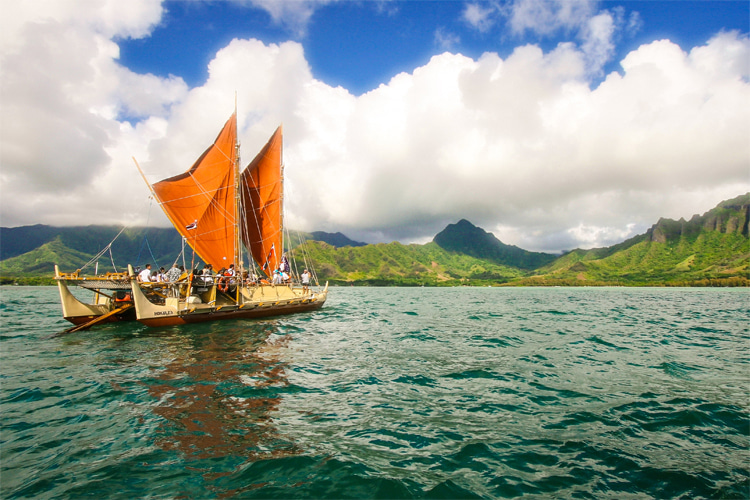
Classified as "Critically Endangered" by UNESCO, the native Hawaiian language has approximately 2,000 speakers. Here's what makes it so special.
Hawaii is a unique archipelago with an ancient Polynesian culture.
It's also home to an exclusive endemic ecosystem, where 90 percent of its fauna exist nowhere else in the world.
While the Hawaiian Islands have existed for over 3.4 million years, the earliest documented record of the oral language ('Ōlelo Hawai'i) dates back to 1778, when Captain James Cook set foot on the island of Kauai.
It is estimated that, at the time, between 400,000-800,000 natives spoke the indigenous language.
Hawaiian belongs to the Polynesian language family, sharing similarities with Tongan and Samoan.
Although speakers of Hawaiian may find some basic mutual understanding with speakers of other Polynesian languages, it's important to note that these languages are not interchangeable.
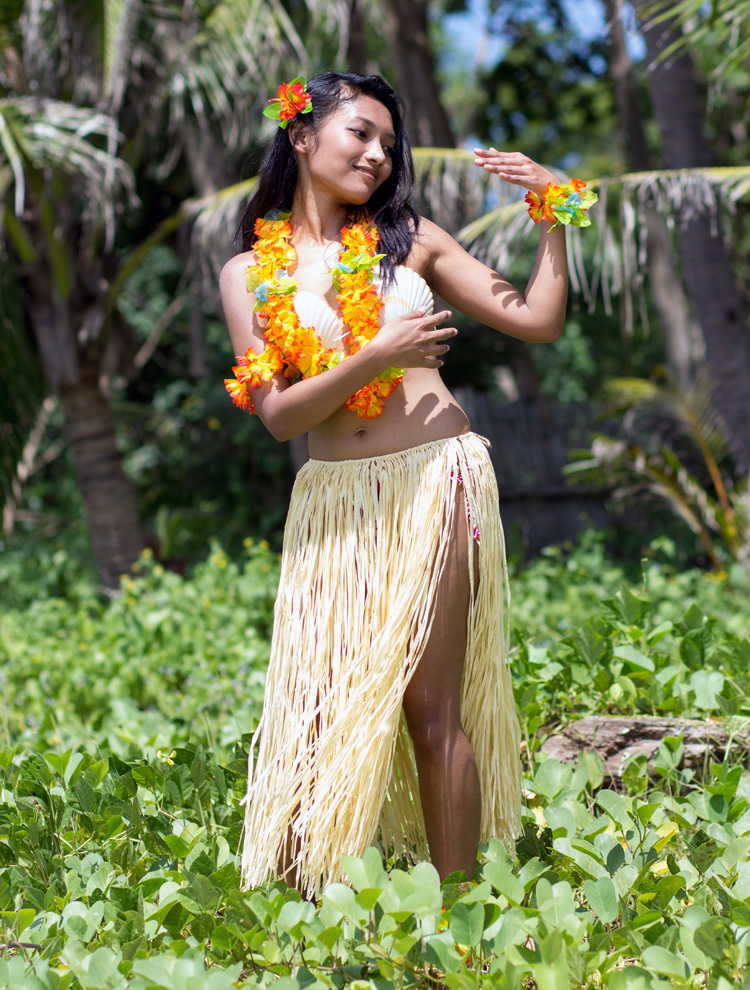
The World's Shortest Writing System
However, the colonization of the archipelago devastated the local dialect.
The British occupiers took over Hawaii in the late 18th century and 19th century, and by 1820, the Christian missionaries made sure to convert the Hawaiian language to a 13-letter Latin alphabet.
It consisted of five vowels (a, e, i, o, and u) and eight consonants (h, k, l, m, n, p, w, and '), used to translate the Bible into the local language.
The 'okina, often represented by a grave accent (`), a left single quotation mark (‘), or an apostrophe ('), seems to have appeared around 1850.
The special character is considered the eighth consonant and indicates a glottal stop, i.e., a break, stop, or separation between letters, changing the meaning of words.
Curious fact: there's an 'okina in the word Hawai'i, making the correct spelling "ha-VAI-ee."
Last but not least, there's the kahakō, the macron that stresses or lengthens the marked vowel.
Unlike what most people think, the longest word in the Hawaiian language is not humuhumunukunukuāpua'a (freely translated as "triggerfish with a snout like a pig").
The longest 'Ōlelo Hawai'i word is lauwiliwilinukunuku'oi'oi (freely translated as "long-snouted fish shaped like a wiliwili leaf") because the two 'okina count as consonants.
Despite having the world's shortest alphabet and exactly 50 percent fewer letters than the English writing system, Hawaiian is incredibly versatile, rich, and descriptive.
For instance, the word aloha does not have an exact or equivalent translation in English, and alongside mahalo, it is the two most used words in Hawaiian.
Another particular curiosity is that all Hawaiian words end with a vowel, and vowels always follow consonants.
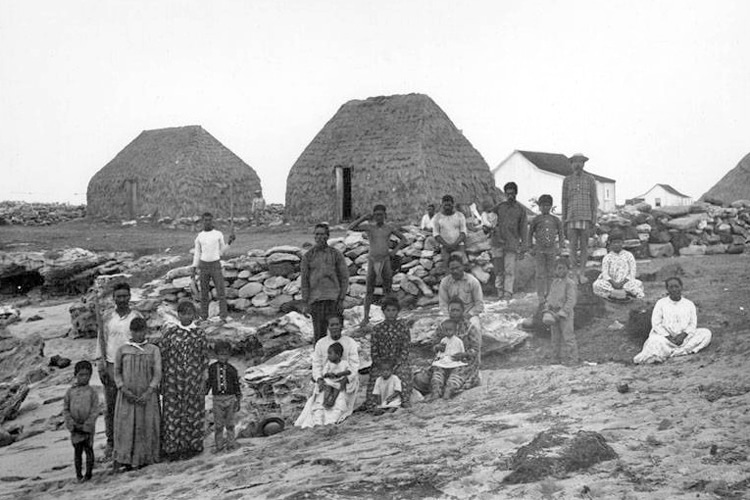
'Ōlelo Hawai'i and Pidgin
Following Hawaii's annexation by the United States in 1898, the Hawaiian language was prohibited in educational institutions and government settings.
However, individuals retained the freedom to speak Hawaiian; notably, 14 distinct newspapers continued to be published using the Hawaiian alphabet during this period.
Being one of the oldest living languages on the planet, it became a national treasure when the 1978 Hawaii State Constitution awarded it official status.
Nowadays, Hawaii is the only US state with two official languages: Hawaiian ('Ōlelo Hawai'i) and English.
Purists and full-blooded Hawaiians, though, still reject the language's established grammar, noting that it has been distorted and adapted to Western and colonial norms.
There is an ongoing debate on which language version should be preserved, academic or informal Hawaiian.
Nevertheless, Hawaiian Pidgin, a unique Creole language, is more spoken in Hawaii than Hawaiian.
Also known as Hawai'i Creole English (HCE), Pidgin has 600,000 Hawaiian residents who speak it natively and around 400,000 who adopt it as a second language.
The dialect emerged on Hawaiian sugar plantations during the 1830s as a means of communication among workers from diverse corners of the globe.
It resembles and sometimes sounds like a mix of Japanese, Portuguese, American English, and numerous other languages.
In one particular location, the original Hawaiian ('Ōlelo Hawai'i) remains dominant: the small "forbidden" island of Ni'ihau (pictured above), inhabited by fewer than 170 people.
Here, residents persist in using Hawaiian as their primary language for daily communication.
Aloha State lawmakers are trying to pass bills that will make Hawaiian language courses mandatory for high school students.
Words by Luís MP | Founder of SurferToday.com
https://www.surfertoday.com/surfing/interesting-facts-about-the-hawaiian-language

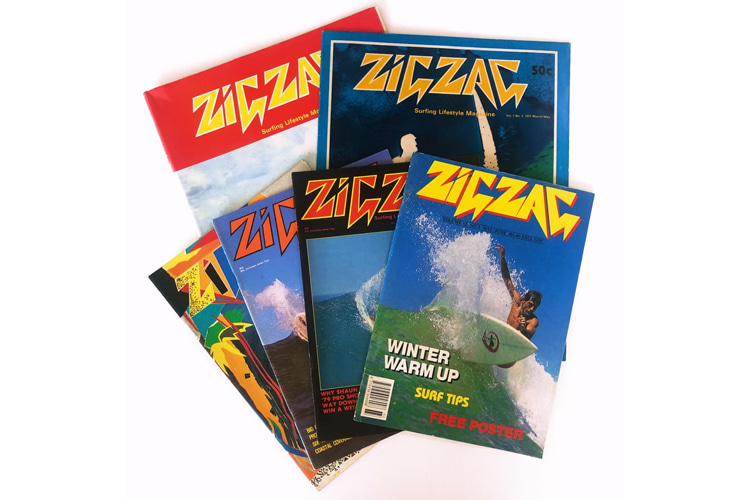
The news that Zigzag's print edition would end in December 2023 was short-lived as this iconic South African surfing magazine will be back on shelves in July 2024.
Rebel Media Group, a European media and marketing conglomerate and dedicated youth culture specialist, recently acquired the magazine, which has been in print since 1976.
Christian Herles from Rebel Media Group says Zigzag has been the flagship voice of South African surf culture for 48 years, and now is the time to embrace more of the African continental surf movement.
"The plan is to produce content across our various touchpoints that will bring this knowledge to the European surf tribes and vice versa."
"Through Zigzag, the European and African surf cultures will get to know each other better, allowing for a deeper understanding and enjoyment of the amazing people, locations, and experiences we can all have in each other's turfs."
Herles said, in addition, the support of Rebel Media's other publishing assets, such as Prime's skiing, surfing, MTB, snowboarding, and WavePoolMag, will enable Zigzag to tap into the different core audiences who share these values.
Zigzag is the third longest-running surf print magazine in the world, and its acquisition by Rebel Media Group will ensure that it continues to publish across print, digital, and social media platforms.
This iconic surfing magazine has established itself as the mouthpiece of the South African surfing community and the global authority on surfing in Africa.
Rebel Media Group specializes in niche board and youth sports productions and is no stranger to the South African surfing scene.
It is the creator of the Rebel Sessions big wave events held at Dungeons in Cape Town.
Under Rebel Media, Zigzag will publish two bumper, premium print editions per year, Winter and Summer, starting this July.
The aim is to increase the value through more pages, better quality paper and print production, and the same original and excellent long-form surf content readers have come to know and love for almost 50 years.
Until then, Zigzag's online and social media operations will generate fresh content and projects, with several new Zigzag initiatives planned for the second half of the year.
Experienced Team Returns
Aside from Rebel Media's input, there is a hugely experienced local team poised to take Zigzag into the future.
Greg Ewing returns as managing editor and archivist.
After more than two decades in the fold, his intimate knowledge of the brand and high-quality visuals will prove invaluable in sourcing A-grade surfing content while supporting Zigzag's loyal visual contributors and nurturing the next generation of African surf content creators.
He is also responsible for preserving and digitizing Zigzag's extensive archive, documenting South African and African surfing culture and expression.
"After working on The Last Zag and seeing the reaction and feedback, it really hit home how strong the brand Zigzag is and how it has a place in so many people's lives, far beyond surfing," commented Ewing.
"I'm really happy that it lives on and excited to be involved in the next chapter."
Jazz Kuschke has climbed aboard and will take charge of Zigzag editorial across all the magazine's channels: print, digital, and live.
He is a heavyweight editor, journalist, and content marketing specialist, as well as a longtime contributor to Zigzag.
His extensive experience includes contributions towards Red Bull, The Mission flyfishing magazine, and niche titles and brands such as Men's Health and Bicycling, among others.
"The surf industry and media landscape have both evolved significantly over the past decade, and with this new incarnation, Zigzag is perfectly positioned," said Kuschke.
"Zigzag is the pinnacle of surf journalism in Africa and I can't be prouder to bear the torch - it feels like everything I've done in my career has built up to this."
Creating continuity, Zigzag's former owner and publisher, Andy Davis, will act as an editorial consultant. Davis says this marks a new chapter in Zigzag's long and proud history.
"I was told, when we bought the magazine in 2013, that no one really 'owns' Zigzag and that we are all just custodians," concludes Davis, adding he is proud to hand over the custodianship of this iconic surfing brand to Rebel Media.
"We hold the line for the community in service of the glory that is surfing in Africa. It has been an honor."
The team is hard at work on the first issue.
https://www.surfertoday.com/surfing/third-longest-running-surf-magazine-zigzag-relaunched

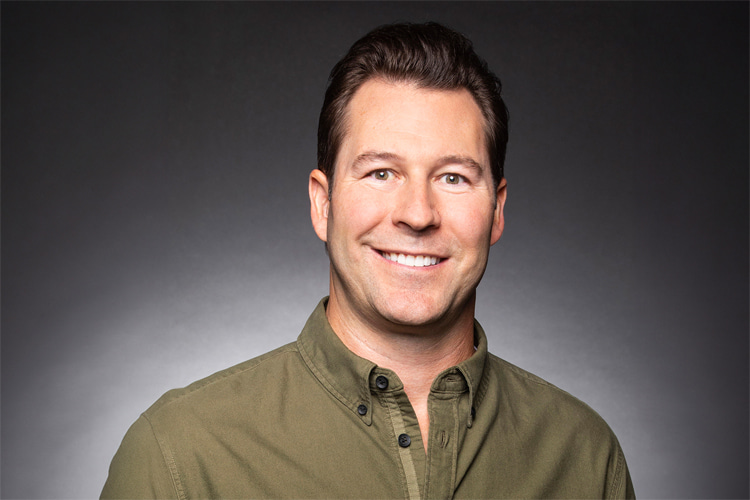
Ryan Crosby is the new chief executive officer (CEO) of the World Surf League (WSL).
The professional surfing circuit chose the successor of Erik Logan, the man who led WSL from January 2020 to June 2023.
Since his sudden departure, Emily Hofer, WSL's chief people and purpose officer, and Bob Kane, chief operating officer and chief legal officer, served as interim CEOs.
Ryan Crosby has two decades of experience working as a marketing professional in technological and entertainment companies like Microsoft (2006-2010), En Masse Entertainment (2010-2012), Activision (2012-2015), Netflix (2015-2018), Hulu (2018-2021), and Riot Games (2021-2024).
"What I love about surfing is that it's an incredibly competitive sport, but it's also a way of life, a passion, and a deeply committed global community," said Crosby.
"I am excited to leverage my experience to elevate the WSL brand, deepen our connection with fans, and continue building something surfers can be proud of."
Balancing Profit and Essence
The decision to choose a CEO with a marketing background rather than sports management experience is a sign of the WSL shareholder's priorities.
In other words, Dirk Ziff, the owner of WSL, will continue to get competitive surfing to the mainstream via partnerships with global traditional and new media platforms and providers.
Monetizing pro surfing has been a long-term challenge, and it often conflicts with the hopes and wishes of WSL fans and followers.
The cost of each Championship Tour (CT) event, including logistics, human resources, and prize-money package, was at some point around $3 million, despite the goal to bring it to $1 million.
The new CEO of WSL will have to strike a sensitive balance between keeping the show appealing to the core audience and expanding its reach to a wider non-surfing public.
WSL's long-term vision is to become a media platform capable of generating revenue digitally and via agreements and deals with cable TV and multinational distribution channels.
"Ryan's exceptional track record across some of the most important media platforms, his authentic, approachable manner, and his genuine passion for surfing make him a great fit to lead the WSL into its next chapter of growth and innovation," concluded Dirk Ziff.
Words by Luís MP | Founder of SurferToday.com
https://www.surfertoday.com/surfing/ryan-crosby-named-ceo-of-the-world-surf-league

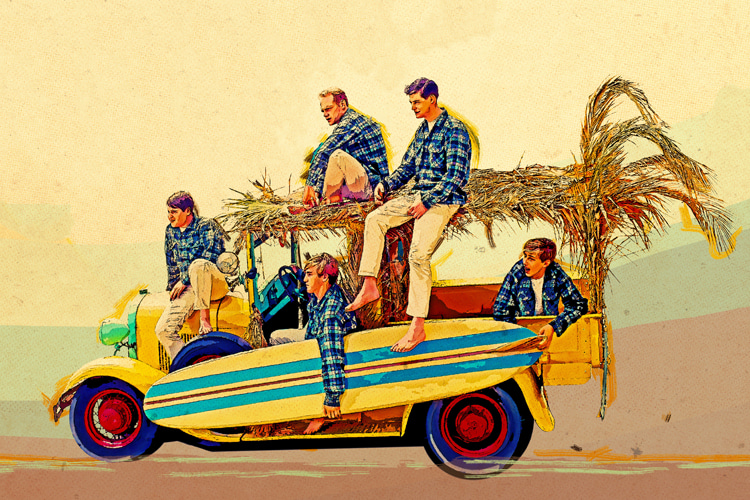
Disney+ announced the release of "The Beach Boys," a documentary celebrating the career of the legendary surf music band.
If there are two global bands that changed the course of music history in the 20th century, they are England's The Beatles and California's The Beach Boys.
They shaped the course of pop in the 1960s and 1970s and went on to influence most of the musical bands that followed.
They are a guiding compass that still echoes in today's musical creations, from mainstream pop to electronic music.
Nevertheless, the sound of The Beach Boys was different. It was fresh, cool, dreamy, and innovative in all fields.
The sonic collages Brian Wilson and friends experimented with vocals, instruments, and music production techniques were groundbreaking and rather different from what was being done in the British Isles.
At the peak of their success, and still today, it's easy to find people who prefer The Beach Boys to The Beatles even though they were never necessarily competing with each other.
If Liverpool had "Sgt. Pepper's Lonely Hearts Club Band," the Los Angeles had "Pet Sounds."
Never-seen-before Footage
Disney+'s new documentary on The Beach Boys aims to share with the old and young generations the complex web of composing skills, technical achievements, and intricate personalities that helped create the unique, harmonious sound of the West Coast band.
At some point, the original lineup, consisting of brothers Brian, Dennis, and Carl Wilson, their cousin Mike Love, and friend Al Jardine, made friends famous by giving Jan & Dean the hit song "Surf City."
The Beach Boys' lyrical and sonic universe gravitates around the California beach lifestyle, fun, pretty girls, and surfing.
Interestingly, there was only one surfer in the band: Dennis Wilson.
The documentary follows the band from its beginnings in their families, and it shows never-before-seen footage, videos, and interviews with Brian Wilson, Mike Love, Al Jardine, David Marks, Bruce Johnston, and others in music, such as Lindsey Buckingham, Janelle Monáe, Ryan Tedder, and Don Was.
Past members Blondie Chaplin and Ricky Fataar are involved, too, and we'll hear from Carl and Dennis Wilson in old interviews.
"The Beach Boys" is directed by Frank Marshall and Thom Zimny and written by Mark Monroe. The premiere, along with its soundtrack, will be available on May 24, 2024.
The band's official book, "The Beach Boys by The Beach Boys," will also be out on April 2 through Genesis Publications.
Words by Luís MP | Founder of SurferToday.com
https://www.surfertoday.com/surfing/the-beach-boys-documentary-takes-us-to-the-surf-on-disney-plus
 - All Sports
- All Sports







